Posted by Santana Fell on 2nd Oct 2024
Different Types of Hair Ventilation Used in Hair Systems & Hairpieces
For many individuals, hair loss can be a significant concern that affects their appearance and self-esteem. Fortunately, advancements in hair replacement technology have enabled people to regain their confidence by using hair systems for men and women’s hairpieces.
Hair ventilation is an essential aspect of these hair solutions that is often overlooked. Understanding the different types of hair ventilation used to create a hairpiece will make you an informed hair stylist and help your clients make better decisions when choosing a hairpiece that suits their hair needs.
What is hair ventilation
Hair ventilation refers to the method by which hair is attached to the base of a wig, toupee, or hairpiece. The technique used in hair ventilation plays a crucial role in determining the final look, feel, and durability of the non-surgical hair replacement system.
Let's delve into the different types of hair ventilation techniques used in hair systems and hairpieces to give a natural, comfortable, authentic aesthetic that mimics the appearance of hair growing out from the scalp.
Knotting
Every hairpiece at Real Hair Group is handcrafted to perfection, keeping users' comfort and realistic look in mind. To achieve a reasonable, high-quality, breathable hairpiece, various knotting techniques are used on different hair bases to securely attach the hair to it.
Knotting is a technique used to ventilate or insert the hair and attach it onto the base of the hair system so that it does not slip out easily.
There are several types of knotting techniques used, each offering a different level of durability and natural appearance.
Single Knots: These tiny knots are tied using hair strands and knotted in the same direction. They create a natural-looking hairline and are less bulky, offering a more subtle appearance but not as durable as other knot types.
Hair systems often utilize single knots, which involve tying a small number of strands (typically dependent on the desired density) into a single knot on the base. This knotting technique offers little in terms of volume or longevity compared to other methods. Given their construction, single knots lay flat, making them ideal for hairstyles that require a flat back.
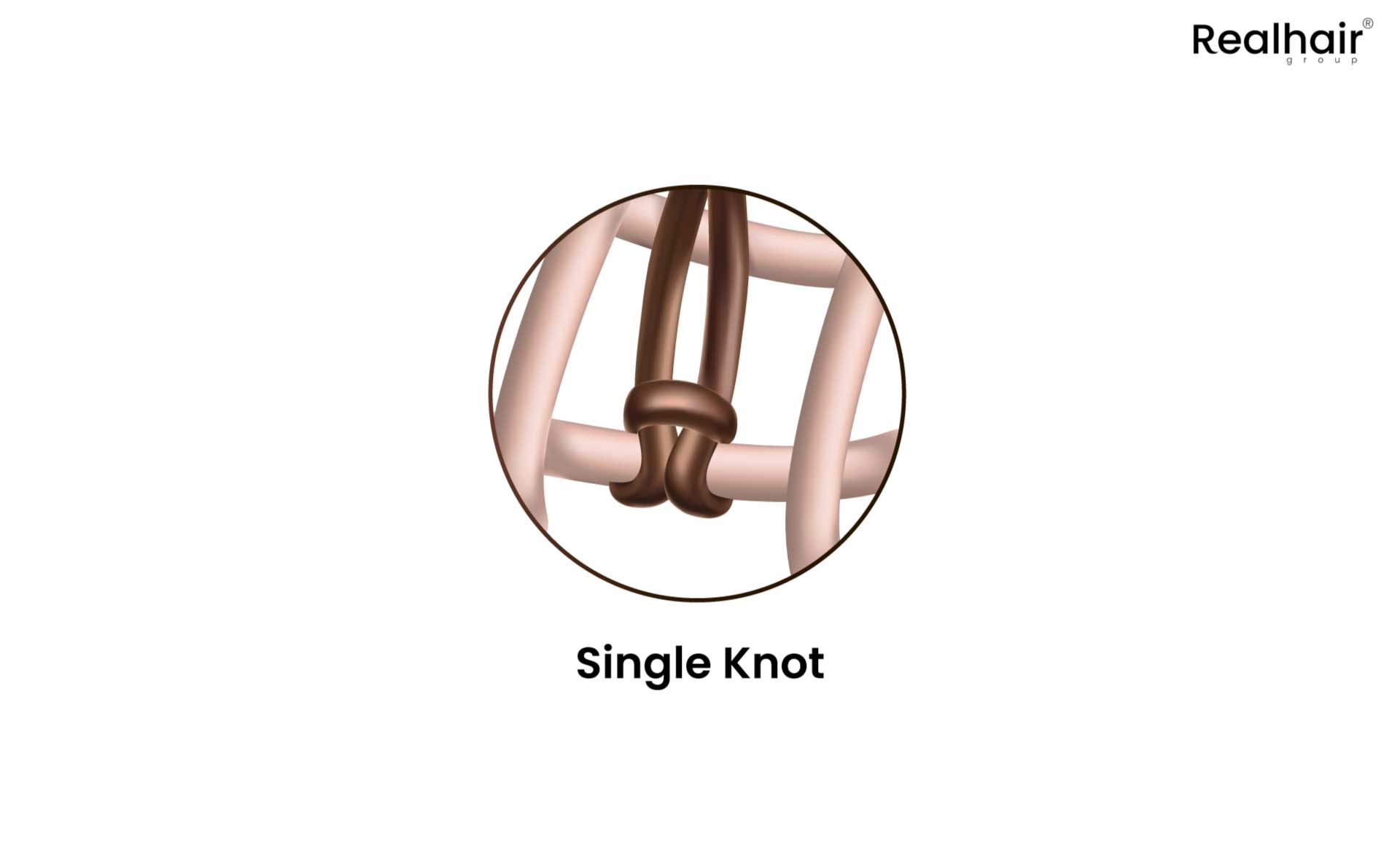
Double Knots: Offering more durability than single knots, double knots involve two or more hair strands being tied together.
This technique results in one of the most secure and long-lasting knots. However, it doesn't produce the most natural appearance. Because the hair is looped twice, the tiny dots where the knots sit on the base become pretty visible. Despite this, the advantage of double knots is that they offer significant volume at the roots, making it easier to achieve a denser look.
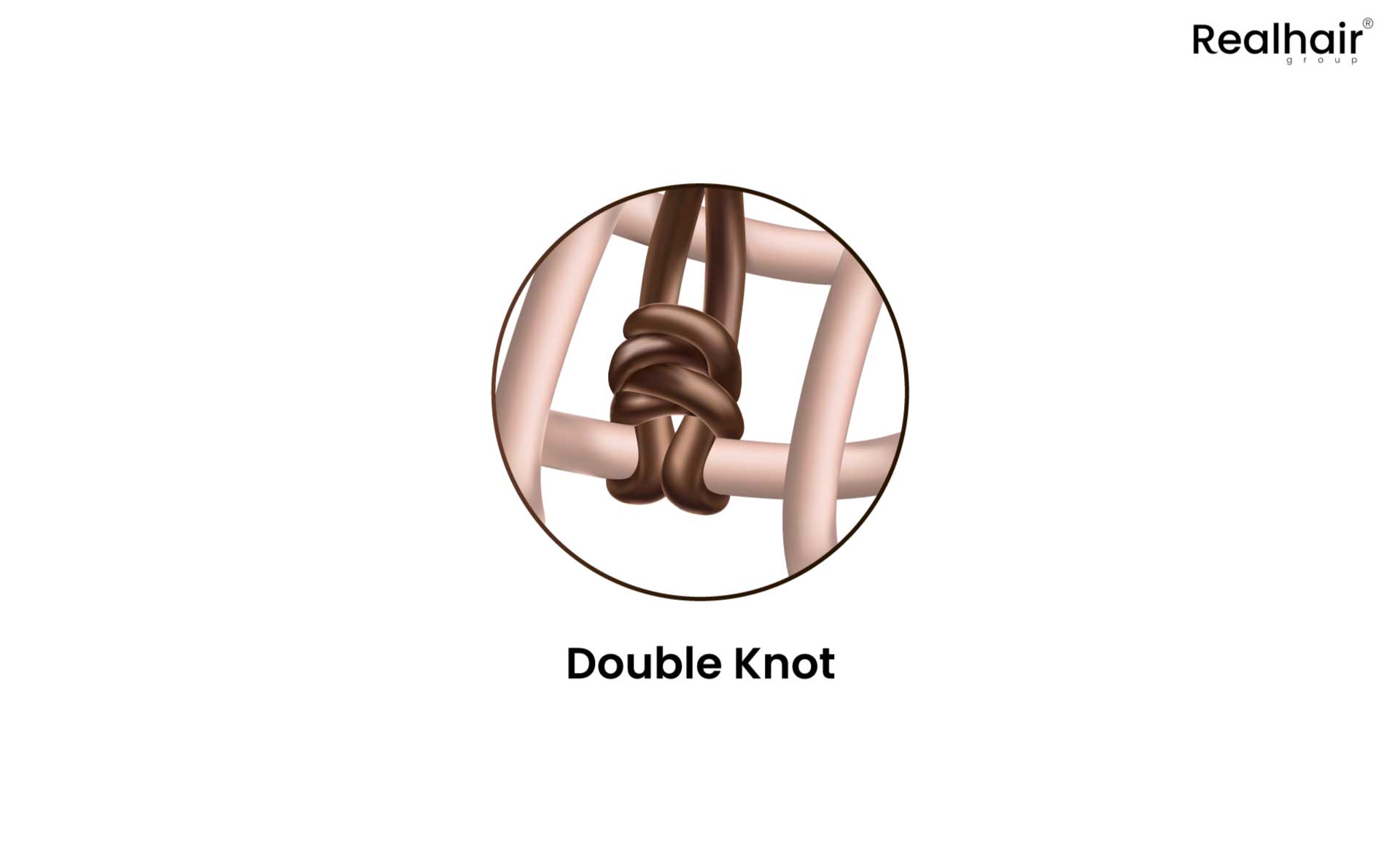
Split Knots: Similar to double knots but split in the middle, divided knots create the illusion of hair growing directly from the scalp. This method provides both a natural appearance and good durability.
1. Single reverse split knot
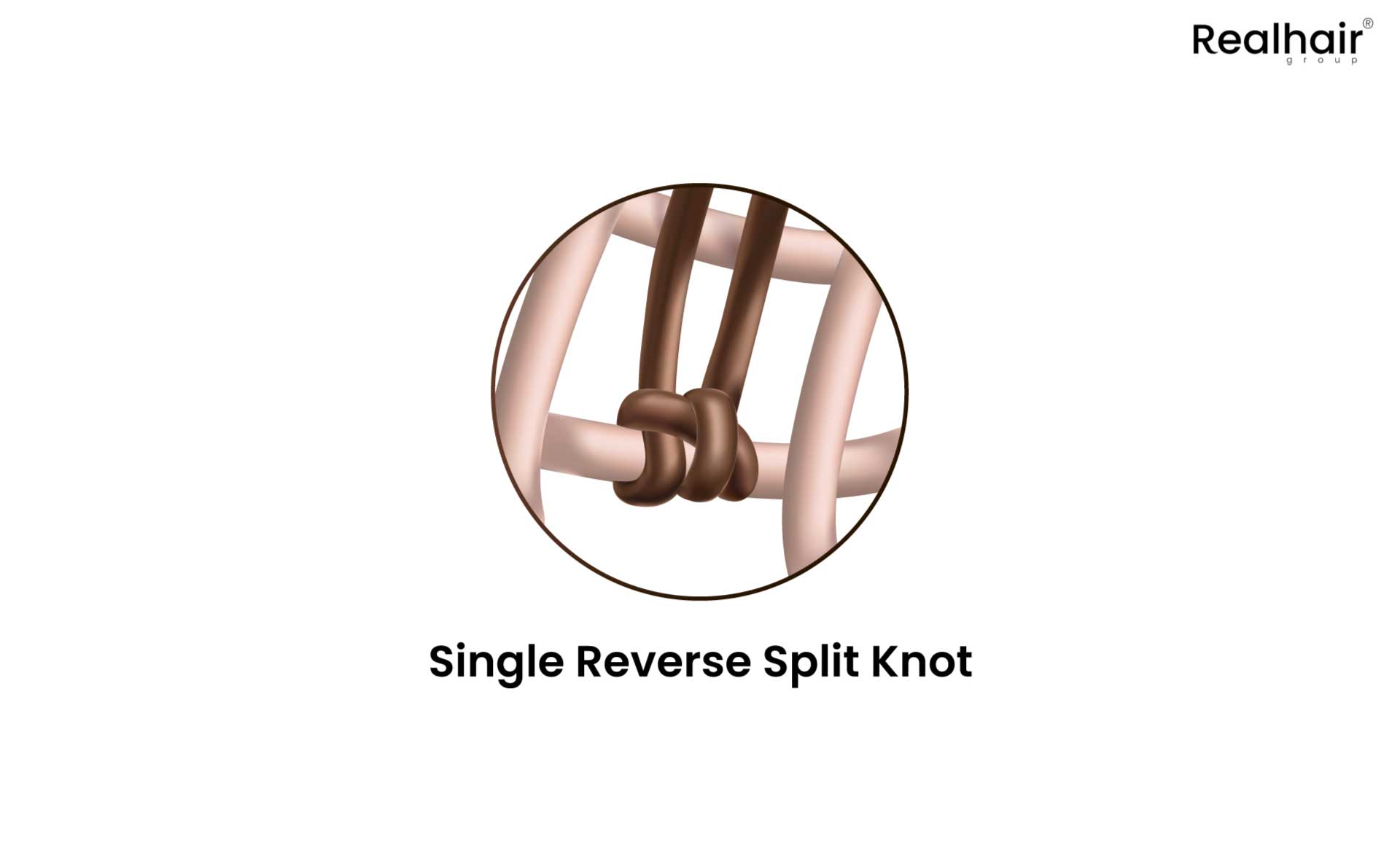
The single reverse split knot is a technique utilized in hair knotting in which the hair strands are divided into two sections. This division creates a gap, allowing greater movement and offering enhanced durability compared to a conventional single knot. This method is predominantly applied to poly-skin base materials.
This knotting technique is likely employed within those regions when the system incorporates a poly skin perimeter. Additionally, the presence of poly aids in better securing the knots. Its less noticeable nature at the root, owing to the smaller size of the knots compared to a double reverse split knot, is another advantage. This knot is primarily preferred at the front of systems with poly perimeters to achieve a more natural appearance and is employed across an entire full skin base.
However, a potential drawback of this knot is its propensity to loosen more quickly than the double split reverse knot, although it still maintains a stronger hold than a single knot.
2. Double reverse split knots

Double reverse split knots employ the same technique as their single counterparts, with the key difference being that each knot is tied twice. This adjustment enhances their durability compared to single reverse split knots, though it also increases their size, making them more noticeable at the root. Typically, this knotting approach is reserved for lace bases and is applied when only single strands are involved.
These knots mirror the characteristics of single reverse split knots, especially in providing movement to the hair. Due to the double knotting, they boast twice the durability of single reverse divided knots. Often utilized in hair systems' top and back areas, they lend additional volume and movement. These knots usually secure more than a few strands of hair together to achieve the desired density. However, a drawback is the increased knot size, making them visibly larger at the root, so their use at the front of the hair system is generally discouraged unless tied with a single strand.
Bleached front knots
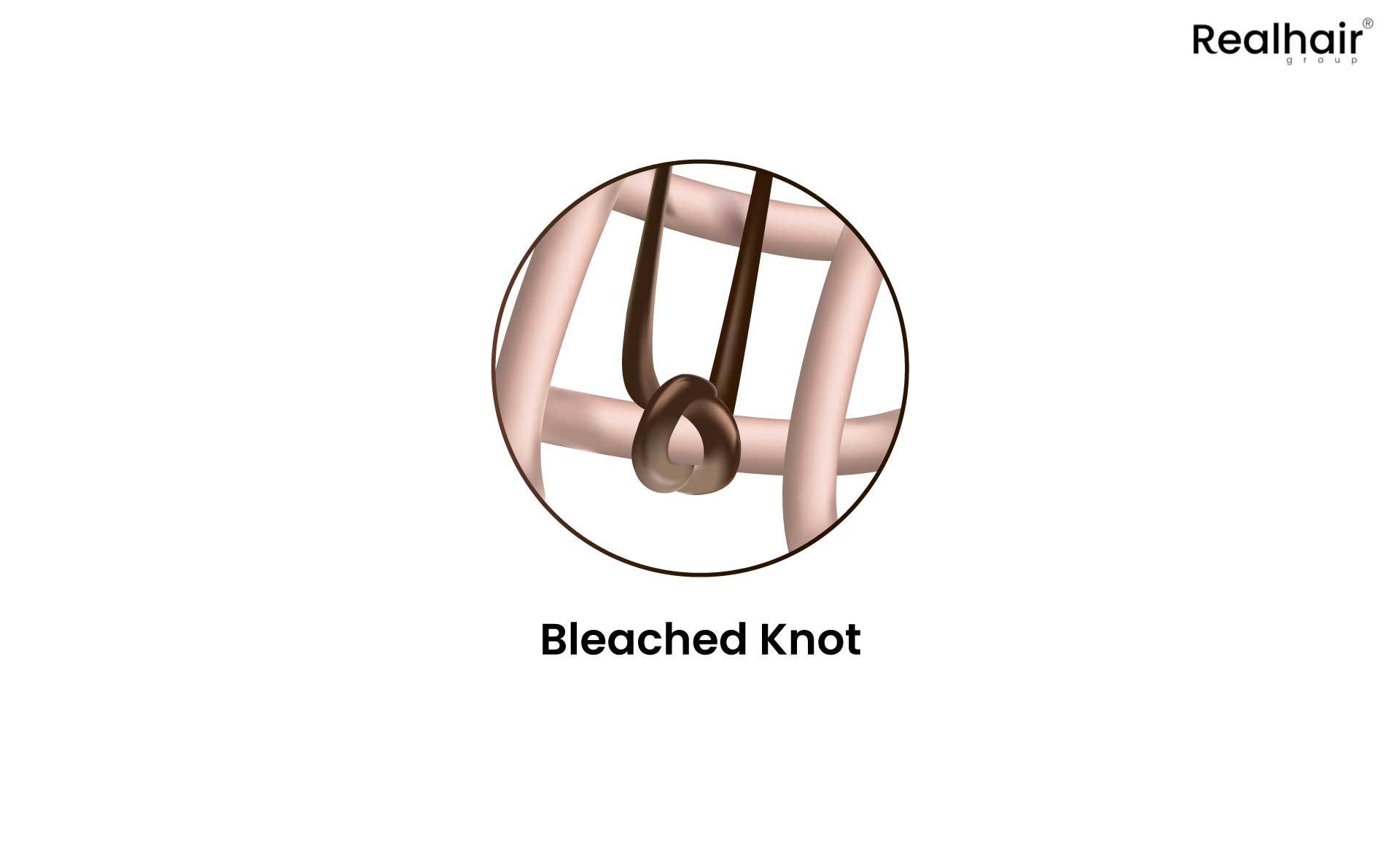
Bleached front knots are when the front hair knots of the hair system are bleached to make them undetectable and provide a realistic and natural-looking front hairline.
It creates an illusion that the knots do not exist, as if the hair comes right out of the scalp. This method helps minimize the look of those pesky little dots at the roots by bleaching the base of the system lighter. This bleaching technique can be used on any knot, but because it is being chemically treated, it will affect the quality of the knots, causing premature breakage.
Invisible knots
Invisible knots use one strand of hair per knot. This reduces the size of the knots, making them look invisible and making your hair system look more natural.
V-Loop
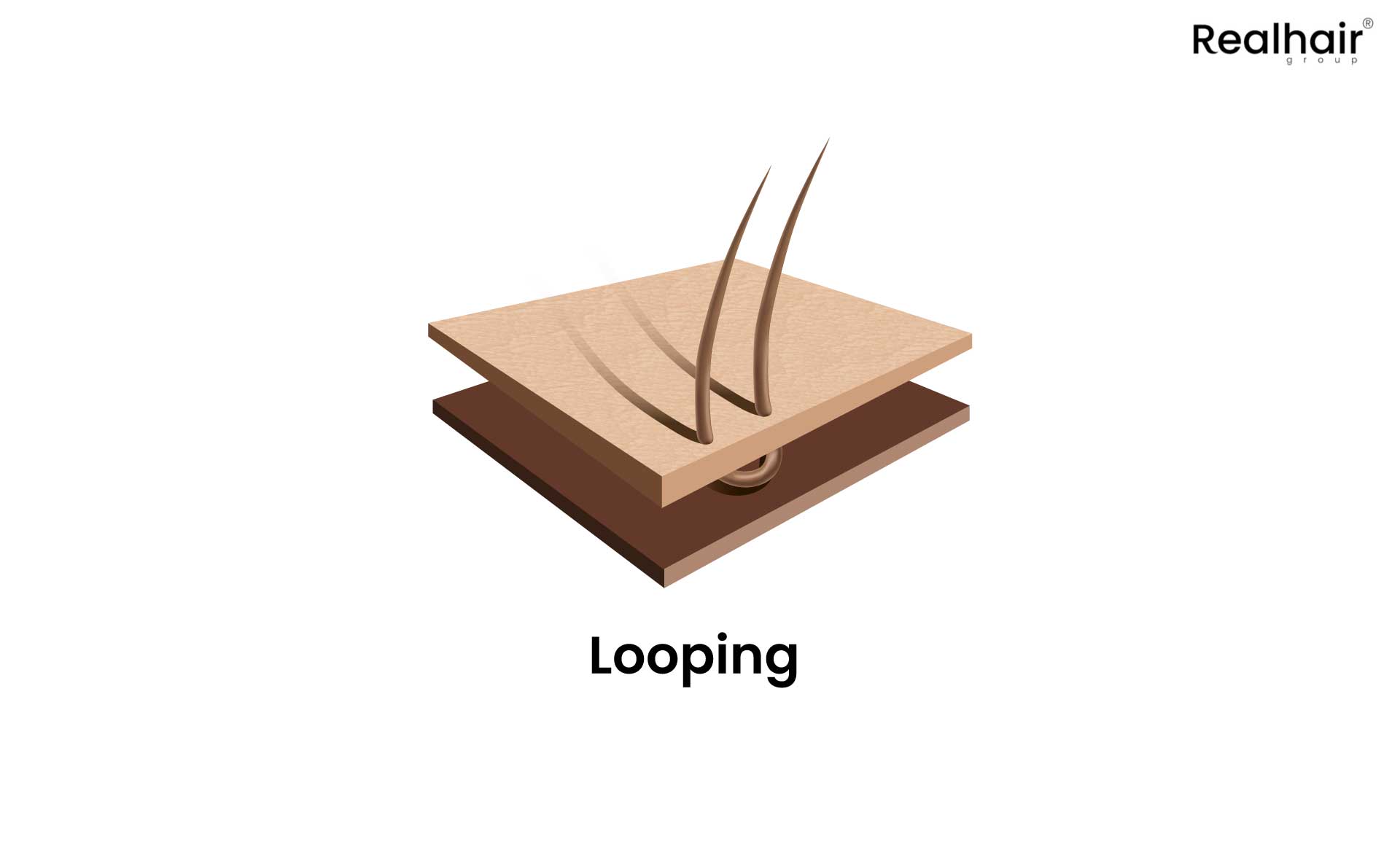
The V-loop method is a unique approach to knotting, where hair is intertwined into the hairpiece in a V-shaped pattern to achieve an exceptionally realistic hairline. This method is typically applied to skin-based or ultra-thin skin hair systems. Each loop produces two hair strands from a single piece of human hair, enabling the hair to move freely and seamlessly integrate with the wearer's natural hair.
At Real Hair Group, we employ an exclusive adhesive formula to secure the V-loop at the top, significantly enhancing the durability of our hair systems compared to others in the market. Our use of the V-loop technique is especially favored for crafting lifelike hairlines and partings in hairpieces, making our solutions highly sought by those seeking an indistinguishable hair replacement option.
Injection
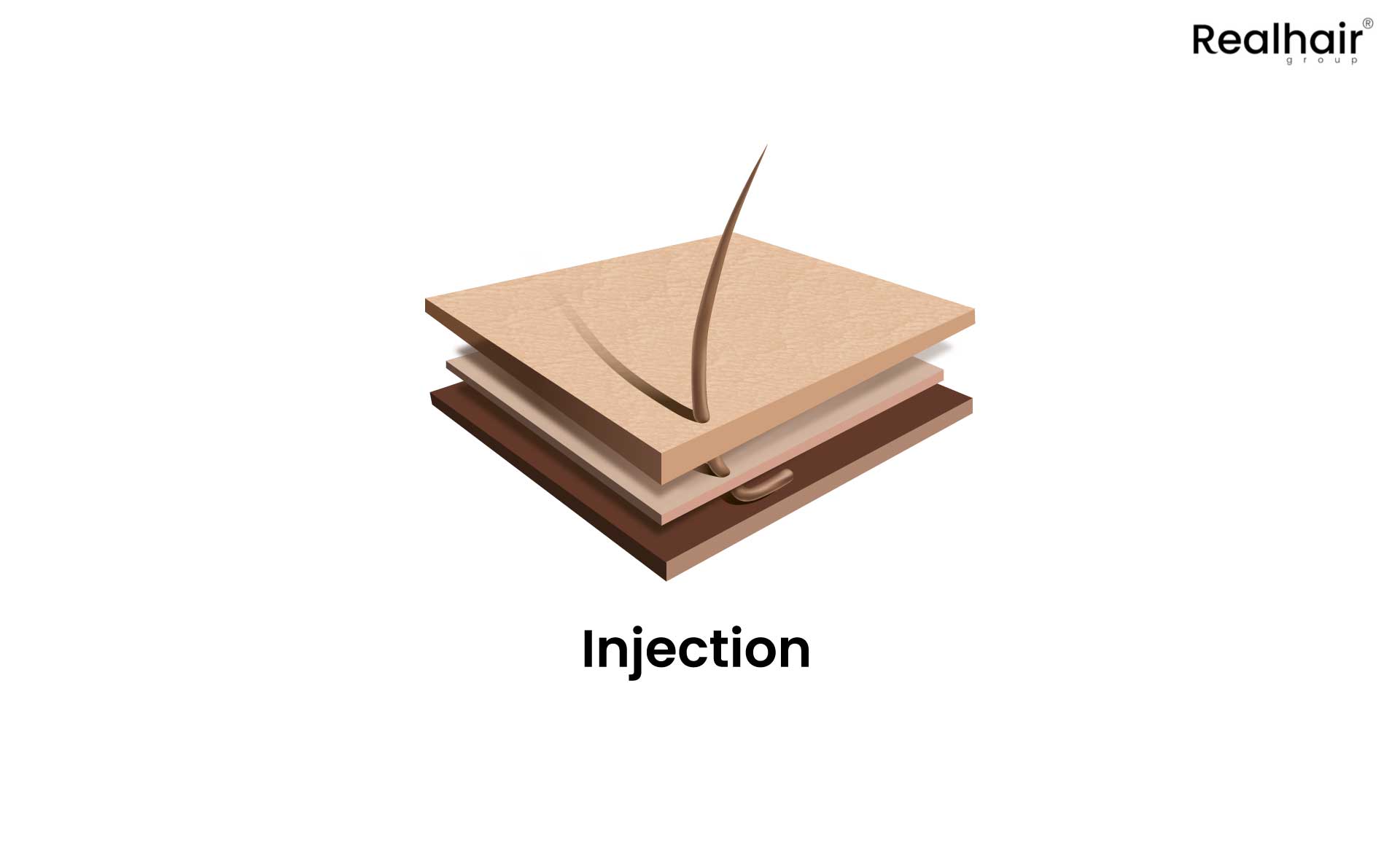
The injection method involves injecting hair strands at an angle directly into a silicone or polyurethane base without knots. This technique creates a highly natural look, with no visible knots, giving the illusion that hair is growing directly from the scalp. Injection ventilation is ideal for creating skin-like hairpieces that are undetectable and comfortable to wear.
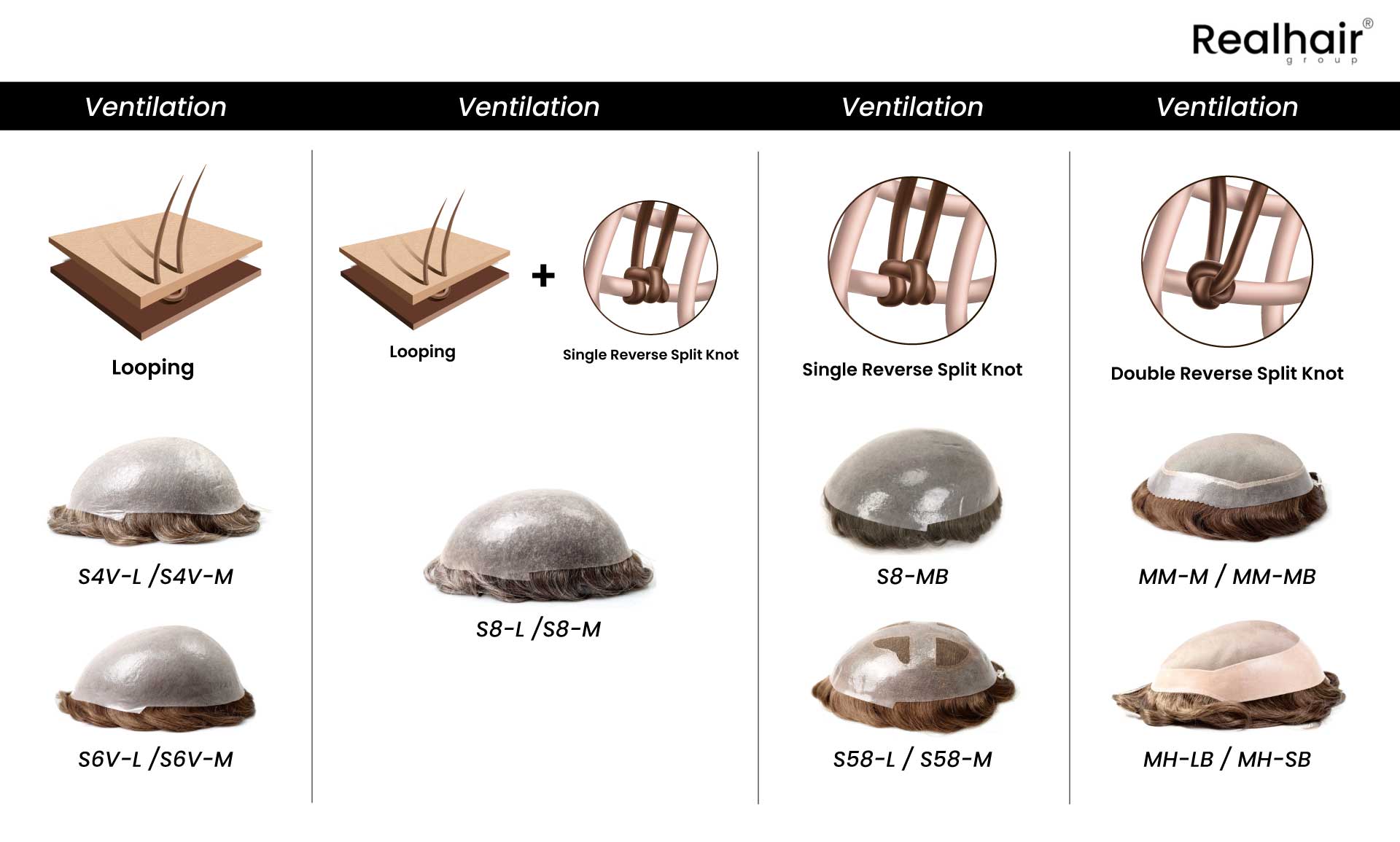
The choice of ventilation method significantly impacts the appearance, feel, and lifespan of hair systems and hairpieces. Each technique offers unique benefits, from the durability of double knots to the natural look of injection and V-looping techniques. Understanding these different techniques can help individuals choose the right hair replacement solution that meets their needs for both aesthetics and comfort. Whether it's regaining the look of a full head of hair or enhancing one's style, the advancements in hair ventilation technology continue to provide effective and satisfying solutions for hair loss.
Why Choose Real Hair Group for Your Clients?
Real Hair Group has the most authentic, real hair that provides a natural look like no other.
We are:
- Trustable
- Have wholesale pricing
- Factory direct sale
- 40+ years of manufacturing experience
- Expert craftsmanship
Choose the best to get the best!



